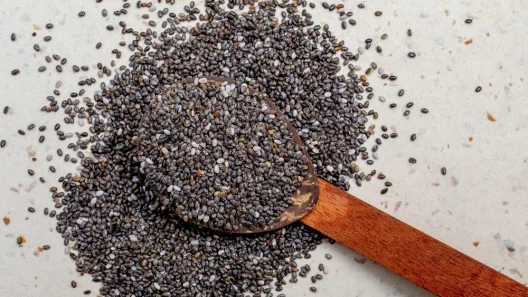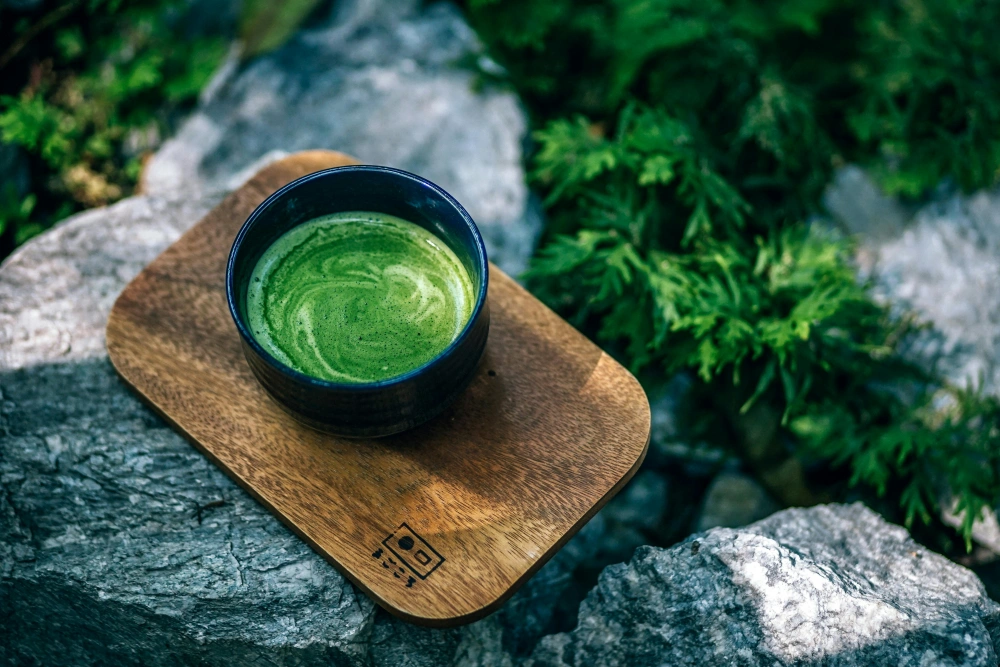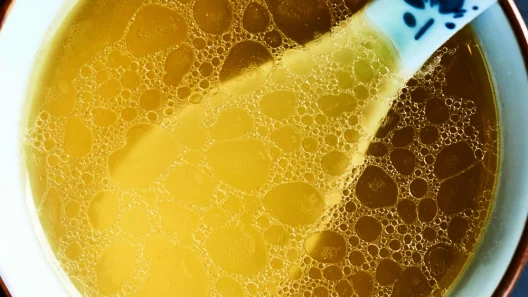Matcha, the vibrant green powdered tea that has taken the wellness world by storm, is more than just a trendy beverage, it’s a nutritional powerhouse with centuries of tradition behind it. Unlike regular green tea where leaves are steeped and discarded, matcha involves consuming the entire leaf ground into a fine powder, providing a more concentrated source of nutrients . Originating from Japanese tea ceremonies dating back to the 12th century, matcha was traditionally revered by monks and samurai for its ability to promote calm alertness during meditation . In 2025, matcha continues to gain popularity as people seek alternatives to coffee that provide sustained energy without jitters or crashes. At MyGreenRemedy, we’re excited to explore the science behind matcha’s impressive health benefits while honoring its rich cultural history. This comprehensive guide will help you understand why this brilliant green powder deserves a place in your wellness routine.
What Makes Matcha Different from Green Tea?
Unique Growing and Processing Methods
Matcha’s distinct properties begin with its shade-growing process. Approximately three to four weeks before harvest, tea plants destined for matcha are covered with special shading nets or mats, which reduces direct sunlight by up to 90% . This stress response triggers the plants to produce higher levels of chlorophyll (giving matcha its vibrant green color) and increases the production of certain amino acids, particularly L-theanine . After harvesting, the leaves are briefly steamed to prevent oxidation, then dried and carefully stone-ground into an ultra-fine powder, a process that can take up to an hour for just 30 grams of matcha .
Nutritional Superiority
Because you consume the entire leaf when drinking matcha, you receive a more concentrated sourceof nutrients compared to regular green tea. Research indicates that matcha contains significantly higher levels of catechins, antioxidants, and amino acids than standard green tea . Specifically, matcha provides approximately:
- 137 times more antioxidants than regular green tea
- 3 times more catechins than other types of green tea
- Higher concentrations of L-theanine, the unique amino acid responsible for matcha’s calming effects
This nutritional profile makes matcha a particularly potent form of green tea with distinct health benefits.
Table: Nutritional Comparison of Matcha vs. Regular Green Tea
| Nutrient | Matcha | Regular Green Tea | Difference |
| Antioxidants | 134 mg per serving | 63 mg per serving | 113% more |
| Catechins | 3 times higher | Standard amount | 200% more |
| L-theanine | 45 mg per serving | 3 mg per serving | 1,400% more |
| Caffeine | 35-70 mg per serving | 15-48 mg per serving | 30-45% more |
Key Health Benefits of Matcha
Sustained Energy Without Jitters
One of matcha’s most celebrated benefits is its ability to provide clean, sustained energy without the nervousness or crash associated with coffee. This unique effect comes from the combination of moderate caffeine content (approximately 35-70 mg per serving) with L-theanine, a calming amino acid . Unlike coffee’s rapid caffeine spike, matcha releases energy gradually over 3-6 hours due to how the body metabolizes its compounds . The L-theanine in matcha promotes alpha brain wave activity, which induces a state of calm alertness, relaxed yet focused, rather than the beta brain waves associated with coffee’s more jittery energy .
Enhanced Focus & Cognitive Support
Matcha’s unique combination of L-theanine and caffeine has been shown to significantly improve cognitive performance. A study published in the journal Nutrition Reviews found that participants consuming matcha showed improvements in attention, reaction time, and memory compared to those given a placebo . The mechanism behind this cognitive enhancement involves L-theanine’s ability to cross the blood-brain barrier and increase production of serotonin, GABA, and dopamine, neurotransmitters that regulate mood, memory, and concentration . Regular matcha consumption may also support long-term brain health; research suggests it can help reduce neuroinflammation and upregulate Brain-Derived Neurotrophic Factor (BDNF), a protein crucial for learning and memory .
Exceptional Antioxidant Content
Matcha contains an impressive array of antioxidant compounds, particularly catechins – a type of polyphenol with potent health benefits. The most abundant and powerful catechin in matcha is epigallocatechin gallate (EGCG), which has been extensively studied for its disease-fighting properties . According to ORAC (Oxygen Radical Absorbance Capacity) tests, which measure antioxidant potency, matcha scores 1,384 units per gram, significantly higher than other antioxidant-rich foods like blueberries (93 units), pomegranates (105 units), and spinach (102 units) . These antioxidants help neutralize free radicals, unstable molecules that can damage cells and contribute to aging and chronic diseases .
Metabolism & Weight Management Support
Several studies suggest that matcha may support weight management through multiple mechanisms. The EGCG in matcha has been shown to increase the body’s thermogenic activity (fat burning) and enhance metabolic rate . A 2020 meta-analysis concluded that green tea catechins, when combined with caffeine, could significantly reduce body mass index (BMI) and body weight when combined with diet and exercise . Additionally, matcha may help regulate appetite by increasing cholecystokinin (CCK), a hormone responsible for promoting feelings of fullness . While matcha isn’t a magic weight loss solution, it can be a valuable component of a comprehensive weight management strategy.
Heart Health Support
Regular matcha consumption may benefit cardiovascular health through multiple pathways. The catechins in matcha, particularly EGCG, have been shown to help reduce LDL cholesterol (the “bad” cholesterol) while maintaining or increasing HDL cholesterol (the “good” cholesterol) . This improvement in lipid profile can help prevent atherosclerosis, the buildup of plaque in arteries that can lead to heart attacks and strokes. Additionally, matcha’s anti-inflammatory properties may help reduce inflammation in blood vessels, further supporting cardiovascular health . A 2003 study from Vanderbilt University Medical Center found that participants taking green tea extract equivalent to 3.5 cups of matcha daily experienced a 16% reduction in cholesterol levels .
Detoxification Support
Matcha’s high chlorophyll content, a result of its shade-growing process, may support the body’s natural detoxification processes . Chlorophyll has been shown to help bind and eliminate heavy metals and environmental toxins from the body. Additionally, matcha supports liver health, the body’s primary detoxification organ. Research has shown that green tea consumption is associated with improved liver enzyme levels and reduced risk of liver disease . However, it’s important to note that while matcha can support the body’s natural detoxification systems, it shouldn’t be viewed as a “detox miracle”, the body’s liver and kidneys are highly efficient at detoxification without supplemental support.
How to Use Matcha
Traditional Preparation
The traditional Japanese method of preparing matcha involves specific tools and techniques:
- Sift 1-2 teaspoons of matcha powder into a bowl to remove clumps
- Add 2 ounces of hot water (approximately 175°F/80°C, not boiling, which can damage delicate compounds)
- Whisk vigorously in a zig-zag motion using a bamboo whisk (chasen) until frothy
- Drink immediately to enjoy the full flavor and nutrient profile
Modern Applications
Beyond traditional tea, matcha can be incorporated into various recipes:
- Matcha latte: Whisk matcha with a small amount of hot water, then add steamed milk of choice
- Smoothies: Blend 1 teaspoon of matcha into fruit or green smoothies
- Baked goods: Add matcha to muffins, cookies, or energy balls for a nutritional boost
- Overnight oats: Mix matcha into your morning oats along with other superfoods
- Salad dressings: Whisk matcha into olive oil-based dressings for an antioxidant boost
Serving Recommendations
For most adults, 1-2 teaspoons of matcha powder daily (providing approximately 70-140 mg of caffeine) is considered a safe and effective amount . Due to its caffeine content, it’s best to consume matcha earlier in the day to avoid potential sleep disruption. If you’re new to matcha, start with a smaller amount (½ teaspoon) to assess your tolerance and gradually increase as desired.
Choosing High-Quality Matcha
Understanding Grades
Matcha is typically categorized into two main grades:
- Ceremonial grade: The highest quality matcha, made from the youngest tea leaves, stone-ground to an ultra-fine powder. It has a vibrant green color, smooth texture, and delicate flavor. Best for traditional preparation .
- Culinary grade: Slightly lower quality, with a more robust flavor that stands up well to other ingredients. Ideal for lattes, smoothies, and baking .
Origin and Quality Indicators
When selecting matcha, consider these factors:
- Origin: Japanese matcha, particularly from the Uji region of Kyoto, is generally considered superior due to ideal growing conditions and traditional processing methods .
- Color: High-quality matcha should be vibrant green, duller, yellowish, or brownish tones indicate lower quality or aged powder .
- Texture: Should be fine and silky, similar to eye shadow or cornstarch .
- Certifications: Look for organic certification to minimize exposure to pesticides and other contaminants .
Risks & Considerations
Caffeine Sensitivity
While matcha generally contains less caffeine than coffee (approximately 35-70 mg per serving vs. 100-120 mg in coffee), those with caffeine sensitivity should still exercise caution . The combination of caffeine and L-theanine typically produces a smoother energy experience than coffee, but individuals who are particularly sensitive to caffeine may still experience side effects like jitters, headaches, or sleep disruption if consumed too close to bedtime.
Contaminant Concerns
Like other tea products, matcha can potentially contain heavy metals such as lead, which the plant absorbs from soil . However, because matcha is grown in shaded conditions, it may actually absorb less environmental contaminants than other teas. To minimize risk:
- Choose organic matcha from reputable sources
- Select matcha from Japan rather than regions with higher environmental pollution
- Consume in moderation (1-2 servings daily)
Medication Interactions
The vitamin K content in matcha may interfere with blood-thinning medications like warfarin. Additionally, the caffeine in matcha can interact with certain medications, including some antibiotics and heart medications. If you take prescription medications, consult your healthcare provider before adding matcha to your routine .
Wondering about other Superfoods? Take a peek at The Ultimate Guide to Superfoods for Everyday Health.
Matcha Trends in 2025
The Rise of Matcha as a Coffee Alternative
In 2025, matcha continues to gain popularity as people seek sustainable energy alternatives to coffee. The “calm energy” provided by matcha aligns with growing interest in functional beverages that offer both psychological and physical benefits . Specialty matcha cafes are appearing in urban centers worldwide, offering innovative matcha preparations beyond traditional tea.
Social Media Influence
Platforms like TikTok and Instagram have significantly contributed to matcha’s popularity, with #matcha content receiving billions of views. Visually appealing matcha preparations, particularly layered iced matcha lattes and vibrant matcha-based desserts, have become social media staples, introducing the ingredient to new audiences.
Product Innovation
The matcha market has expanded beyond traditional powder to include:
- Ready-to-drink matcha beverages for on-the-go consumption
- Matcha supplements in capsule form for those who dislike the taste
- Matcha-infused foods including chocolates, ice cream, and even savory items
- Beauty products harnessing matcha’s antioxidant properties for skincare
FAQs
Is matcha healthier than coffee?
Matcha and coffee offer different health benefits. While both contain caffeine, matcha provides L-theanine which creates a calmer, more focused energy without jitters or crash . Matcha also contains significantly more antioxidants than coffee. However, coffee has its own health benefits and contains different beneficial compounds. The “healthier” choice depends on your individual health goals and caffeine tolerance.
Can you drink matcha every day?
Yes, daily matcha consumption is generally safe for most healthy adults when consumed in moderation (1-2 servings daily) . Regular consumption may actually provide greater benefits than occasional use, as the beneficial compounds can accumulate in your system. However, those with caffeine sensitivity or certain health conditions should consult a healthcare provider before making matcha a daily habit.
How much matcha is too much?
While individual tolerance varies, consuming more than 2-3 teaspoons of matcha powder daily may lead to excessive caffeine intake, potentially causing side effects like headaches, insomnia, or digestive issues . The high antioxidant content in matcha, while generally beneficial, could potentially cause issues in extremely high doses. Staying within 1-2 servings daily is considered safe for most adults.
Does matcha help with weight loss?
Matcha can support weight loss efforts when combined with a healthy diet and exercise regimen, but it’s not a magic solution . The EGCG in matcha can boost metabolism and fat burning, while the moderate caffeine content may enhance exercise performance. However, sustainable weight loss requires comprehensive lifestyle approaches rather than relying on any single food or supplement.
Conclusion
Matcha offers a unique combination of sustained energy, enhanced focus, and exceptional antioxidant protection that sets it apart from other beverages. Its rich cultural history combined with growing scientific evidence makes it more than just a passing wellness trend – it’s a valuable addition to a health-conscious lifestyle. While matcha isn’t a miracle solution for all health concerns, its unique nutritional profile offers tangible benefits for cognitive function, cardiovascular health, and overall wellness.
As you explore incorporating matcha into your routine, remember that quality matters. Investing in high-grade, organic matcha from reputable sources will provide the best experience and maximum health benefits. Start with small amounts, be mindful of caffeine sensitivity, and enjoy the process of discovering how this ancient Japanese tradition can enhance your modern wellness practices.
For those interested in exploring other natural approaches to cognitive enhancement and stress management, we invite you to read our articles on Adaptogenic Mushrooms for Stress & Focus and Sea Moss Benefits: Why It’s Trending & How to Use It available on our website.
Remember: This article provides educational information only and should not replace personalized medical advice. Always consult with a healthcare professional before making significant changes to your diet, especially if you have underlying health conditions or take medications.










